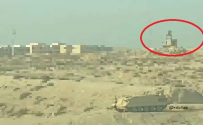It would work as conformal flat panel arrays like you see somewhere in the Chinese UAV thread where you see conformal arrays on the side or bottom of the UAV.
AESA physically looks like a wall of PC graphic cards, but a MIMO array looks like a green printed circuit board with a series of flat squares which are large ICs on it. Each square IC circuit is a complete module to itself, whereas an AESA module is like a PC card or server blade. On higher frequency MIMO arrays, a module SOC is as big as a quarter or dime.
I might see where you may use a SIAR on a UAV implemented either as a flat or conformal panel that is used to map a landscape.
Example of how a MIMO array looks like courtesy of Huawei. These things use up GaN and its a big consumer of it in China which globally dominates Gallium production.
View attachment 90134
Does using MIMO architecture mean radars can be lighter for a given size and performance?


